How to Care for Poinsettias and Encourage Them to Bloom

Poinsettias are a beautiful addition to your home decor any time of the year, but they often bring a much-needed burst of color during those late fall and early winter months when the days get colder and shorter.
Typically sold between Thanksgiving and Christmas, poinsettias are actually the highest-selling potted plant in the United States. Although they’re often associated with the holidays, poinsettias can actually thrive all year long during each and every season.
With the proper guidance, you can continue to care for poinsettias after Christmas—even long after the celebrations have ended. To show you how to properly maintain your poinsettia plant and keep it blooming throughout the year, we will walk you through the most important steps you need to care for a poinsettia plant.
What Are Poinsettias?
Perhaps the most interesting fact about poinsettias, or Euphorbia pulcherrima as they’re known in scientific circles, is that this much-loved plant is esteemed for its leaves rather than its flowers.
In fact, the colorful blooms we often associate with the poinsettia plant—most commonly red, white, and pink—are actually modified leaves called bracts. These brightly-colored bracts are meant to attract insects to the tiny yellow flowers in the middle of the poinsettia plant (called the cyathia).
The bracts will naturally drop off after pollination or any time the plant becomes overly stressed. This stress can happen anytime the poinsettia plant is exposed to extreme temperature shifts or a lack of water.
How to Buy Healthy Poinsettias
There are several things you can do to make sure that you’re buying healthy poinsettias. These pointers are especially important if you’d like your poinsettias to live through the holiday season and beyond:
- Look carefully at the poinsettia plant you’re considering for purchase. Check to see if it has shed any pollen. Avoid plants that already have a dusting of pollen on the bracts.
- Make sure the poinsettia plant has plenty of deep green leaves.
- Consider the conditions it’s currently living in at the store. Poinsettias are tropical plants so they thrive under high levels of humidity and sunlight. If it’s not living in these conditions where you find the plant, it’s probably not off to a very good start.
Basically, you want to make sure that the poinsettia plant is currently healthy, and that it will stay healthy long after you transport it home. There’s nothing worse than buying a beautiful plant at the store only to have it start dying on you just days after you bring it home.
Here are five telltale signs a poinsettia plant may not be healthy and that you should avoid it:
- It has ripped leaves or bracts.
- The flowers are broken apart instead of being tightly clustered buds.
- It has brown or white spots on the leaves, bracts, or roots.
- Its leaves are yellowing or sagging.
- Its soil is overly wet or far too dry.
Lastly, you want to make sure that the poinsettia plant is not infested with bugs before you bring it home. The most common pests that target poinsettia plants are whiteflies, fungus gnats, thrips, shore flies, and spider mites.
By simply looking closely, you can tell whether or not these pests have made a home on your poinsettia plant, whether it’s by yellowing or wilted leaves or by merely spotting the insects.
Are Poinsettias Poisonous?
Contrary to popular belief, poinsettias are not, in fact, poisonous. However, they do have toxic properties that make eating them or overly touching them a bad idea for both humans and pets.
Poinsettia exposure can cause cases of discomfort when touched or ingested, including:
- Stomach aches, vomiting, and diarrhea
- Eye irritation
- Skin irritation like redness, swelling, and itchiness
Fortunately, there are no documented cases of death occurring after poinsettia ingestion. Just the same, it’s best to appreciate your poinsettia plants from afar and refrain from eating them or touching them without gloves.
Of course, picking the plant up by its pot is perfectly fine. Also, be sure to keep your poinsettia plant out of reach from pets and children.
Photo via Joy Us garden
How to Care for a Poinsettia
To care for poinsettias, you really just need to keep six key categories in mind: watering, sunlight, temperature and humidity, pruning, and pests and disease. Understanding how each of these categories affects your poinsettia will help you keep it well-balanced and healthy all year long.
1. Watering
There are two types of watering that need to be done in order to keep your poinsettia plant healthy and happy.
Misting: Poinsettias need tropical conditions to thrive so misting the leaves will help the plant maintain the humidity level it needs. Simply fill a spray bottle with water, allow the water to reach room temperature, and then mist the leaves and bracts every other day.
Regular watering: Your poinsettia plant also requires regular watering to stay alive. But overwatering can hurt the plant just as much as underwatering.
The best way to determine how much water your poinsettia plant actually needs is to check the soil with your fingertips. When the soil is dry to the touch, it’s time to water again. If the soil is soaking wet, you need to allow the plant to drain or dry out properly.
You have a few options when it comes to watering your poinsettia plant. If you wish to do tiny drinks every day, you can do that—or you can leave an ice cube to melt in the pot once a day.
Or, once a week, place the pot under a faucet, run water directly into the pot, and let it drain out through its drainage holes as it sits in the sink.
However you decide to water your poinsettia plant, be sure not to let the soil stay excessively wet after watering, which can lead to rot. On the flip side, don’t let it get completely dried out before watering it again, which can dry up its leaves.
2. Sunlight
Poinsettias are native to Mexico and Central America so they’re used to growing in these moist and balmy tropical regions. That’s why sunlight is such an important consideration when caring for a poinsettia plant—at least six hours of indirect sunlight per day, to be specific.
Place in an East-Facing Window
3. Temperature and Humidity
Whether you care for poinsettias indoors or outdoors, temperature and humidity are two things you need to carefully monitor in order to keep your poinsettia plant balanced. Poinsettias thrive in an environment between 65 and 70 degrees Fahrenheit—the plant will really start to struggle at 50 degrees F.
Furthermore, temperature swings can really hurt your plant so avoid placing them in drafty areas or near fans, vents, or fireplaces where extreme temperature swings are likely to happen.
Keeping up with regular misting, as we mentioned above, will help your poinsettia plant maintain a humid environment. You can also try putting the plant next to another houseplant or two that require similar growing conditions—the plants will naturally release and absorb each others’ humidity.
4. Pruning
Pruning is essential for getting poinsettia plants to rebloom their beautiful bracts. For best results and bigger leaf production, consider pruning a poinsettia plant twice per year—once in spring and once in late summer.
To prune, first, remove all dry, brittle, or wilting leaves by trimming them with clean shears at a 45-degree angle. Don’t worry if some leaves fall off naturally as you handle the plant—they’ll grow back as long as the plant stays healthy!
Next, you’ll want to trim the stems so that they’re about six inches long to encourage new growth. You can then use these stems to propagate new poinsettia plants or dispose of them.
5. Pests and Diseases
Even if you only care for a poinsettia plant indoors, you still run the risk of having pests and diseases take hold of your plant. There are many different types of pests that can target your poinsettia plant and eventually cause it to die.
From sucking the sap the plant needs to stay healthy to chewing up its roots and leaves, pests can wreak havoc on your poinsettia plant in a very short amount of time.
At the first sign of pest infestation—such as spots suddenly appearing, burn marks, or leaves curling up—take action quickly. You can stop the infestation by mixing a horticultural oil (like Neem oil) or insecticidal soap into your regular watering.
Signs of plant disease in poinsettia plants include noticeable changes in the color or shape of the leaves. Unfortunately, there are also many different diseases that can harm your poinsettia plant—here are a few of the most common ones:
- Bacterial blight and cutting rot
- Pythium root rot
- Powdery mildew
- Poinsettia scab
- Rhizoctonia root and crown rot
To treat poinsettia plant diseases, carefully apply a fungicide. Be sure to follow the directions on the label, wear protective gear, and spray the fungicide on the leaves or roots—preferably in the morning or at night. Check out our homemade fungicide recipe here.
How to Get Poinsettias to Bloom After Christmas
In order to get your poinsettia plant to bloom again after Christmas, you need to properly care for poinsettias all year round using the information we’ve provided so far.
A huge component of this is allowing the plant to follow its natural life cycle of dormancy and blooming. To get your poinsettias to bloom properly, here’s a timeline of the plant’s life cycle and how to care for it during each season:
Winter
It’s completely natural for poinsettia plants to go dormant after they bloom around Christmas time. At this point, it’s important to limit watering and only do it when the surface feels dry. It’s time for the plant to rest—think of it as the plant going into hibernation for the winter.
Spring
In the spring, typically around mid-May, repot your plant with fresh potting soil and start a regular watering cycle again. You should also begin to fertilize the plant every two weeks or so.
Poinsettias tolerate either water-soluble or dry fertilizers, so simply follow the directions provided, spray water-soluble fertilizer on the base of the plant, or sprinkle dry fertilizer into the pot. You should complete the first pruning session at this time of year as well.
Summer
Continue watering regularly and fertilizing throughout the summer, move the plant outdoors when the temperatures are consistently 65 degrees, and then prune the plant a second time near the end of the summer before moving the plant back inside.
Fall
Move the plant back inside when temperatures drop to the low 60s. In the fall around October, the plant will need total darkness for 15 hours a day.
Around Thanksgiving, set your poinsettia plant back in a spot that gets at least six hours of indirect sunlight and watch as your poinsettia plant blooms naturally during the Christmas season once again.
Have you kept a poinsettia plant blooming after the holidays? Tell us your tips below!




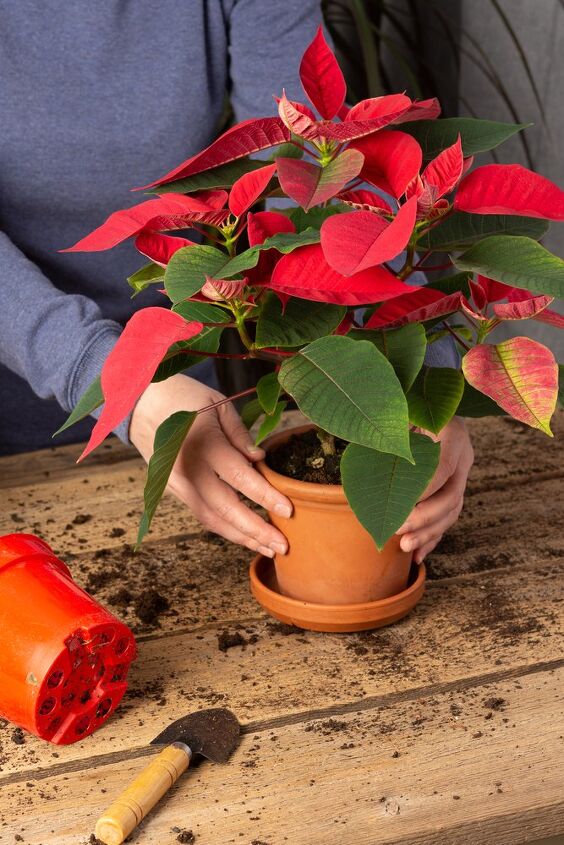

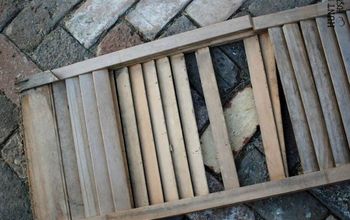
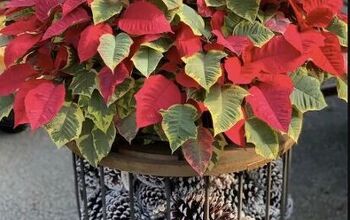
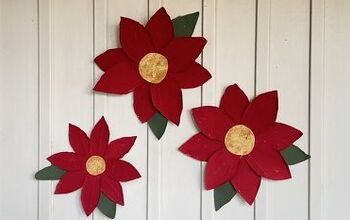
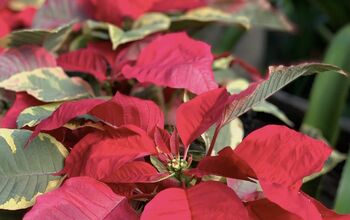



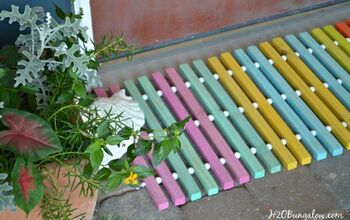




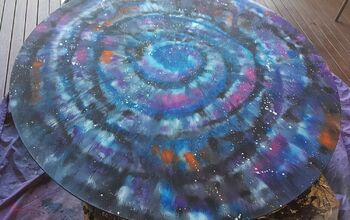
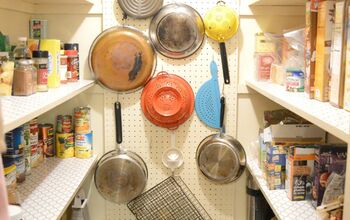


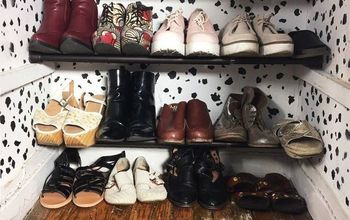

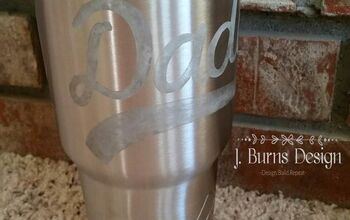
Frequently asked questions
Have a question about this project?